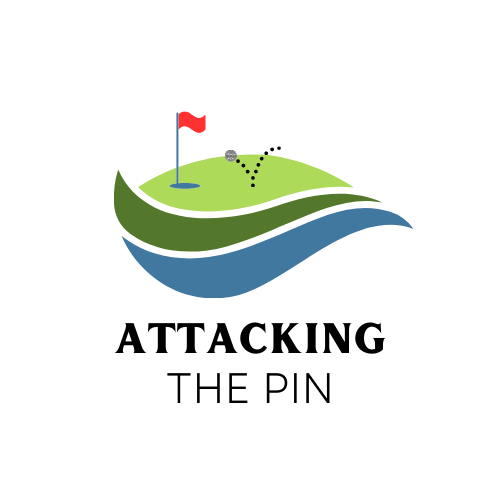
The worst mistake in golf history is Shank. It takes a lot of practice and numerous excellent hits on the range to develop your confidence, but then you take one swing, and your ball flies nearly horizontally off of your target line, sending your game out of control.
With each failed attempt, the stakes only get higher. You begin to doubt yourself and your abilities. So you start again, with the same result. And now you’re nervous. Your swing begins to come apart, and you become hesitant to strike a straight ball because of how dangerous it would be if you missed it.
The real reason for the shank is well understood, and you may take action to avoid it. If you encounter any “shanks,” return to this page so that I don’t keep you in suspense any longer.
What Is A Shank?

When a golf ball strikes the hosel instead of the clubhead, it causes a shank. As a result of the slope, the ball’s path is altered and it goes to the right with an angle of 45 degrees.
Golf Shank Causes

Keep an eye out for the following four things in particular:
1. The Distance Between You And The Ball
The distance between your feet and the ball is the first thing to double-check. Your spine angle will be harmed if you are too close, resulting in an open-faced shank.
The shank may also result from being too far away and the swing momentum causing you to lean towards the ball at impact. Imagine a weightlifter just before they begin to lift to understand better. Their shoulders are positioned above the middle of their feet as they put their weight on the balls of their feet.
When you address the golf ball and then allow your arms to fall naturally to the ground as you swing, a space about an open hand’s breadth should span between your thigh and butt end of the club. You should stand at this distance from the ball to maintain a good posture.
2. Instability Of Grip
The next test is grip pressure, which includes your grip and, more specifically, the amount of force you apply to it. Some golfers’ light grip pressure allows their clubs to vibrate in their hands during the swing. Once again, this might be a factor.
It’s critical to have a suitably neutral, optimum grip on your golf club. To test your grip pressure, grasp some grass between the club butt and pad of your left hand.
This grass should not be disturbed by the swing. If you apply too little force, it’s simple to lose hold of the handle.
3. The Swing Path
When it comes to the most frequent causes of golf shanks, the swing path is almost always at the top of the list. Most golfers generally consider the ideal swing route from impact to the ball-to-target line from inside to outside.
However, this knowledge (as well as a desire to attack the ball from the inside) causes players to whip their clubs off the interior of the takeaway. The only way to retrieve the club from above is to swing over the top.
The player is shocked to discover that this has the exact opposite impact of what he was attempting to avoid a swinging path. It might also play an essential role in your decision to use an iron shotgun.
To assist you with your aim and distance control:
- Place a tee behind the ball, just outside the line from the ball to the target.
- As you take your club away, aim for an inside tee miss.
- Continue to work your head slightly inside the ball as you strike it.
It’s easy to be discouraged when you’re new to this sort of workout, but keep in mind that it doesn’t have to be complicated. While you may need some time and there will undoubtedly be mistakes made, stick with it. With low effort, this exercise will assist you in creating a full swing path.
4. Slide Into The Ball
The downswing begins with the lower body, which explains why your golf shank occurs. A lower-body slide causes a shank during the downswing – the knees flex and begin to move toward the target, forcing the hosel to lead into the golf ball.
Begin the downswing with your left hip near the door and your right leg in front of it. Your hips should contact the bag as you begin the downswing, and then your lower body should turn (without sliding towards the target).
If you’re stumbling into the bag or it’s about to fall over, steady your lower body.
Getting Rid Of Shank
How to get rid of shank? Take a step back and forget about it if you hit the ball then and adequately shank it. Don’t overthink it or make any adjustments to your approach. There’s a good chance you had a fluke, and everyone else did.
Even if it appears to be counterintuitive, there are a few exercises you can use to your advantage.
Begin with a long cardboard box. After that, take the driving range with a bag of balls in hand. Place the board or box on the ground with one of its edges pointed straight at your intended target.
To begin, put the ball on the side of the board closest to you, about a half-inch away from it. Aim for the ball rather than the piece of wood. You won’t be able to do it if you’re coming at it from above as many balls as required but don’t hit that piece of wood.
To get a more varied shot, move farther away from the ball. It’s more challenging to come over the top as you move further away from the ball, and you’ll be less likely to hit it.
It’s a good idea to move your clubface around during your backswing. Many golfers shank the ball and then return their heads shut when they return to their clubs. Swinging it about further will make it more difficult to cast or come over the top, so you’ll have to swing around your body more.
The most crucial thing to bear in mind when you have “shanks” is maintaining your self-confidence and continuing trying. Taking a few days off from the game may be beneficial in some situations. Set a goal for yourself other than your swing, such as improving your putting or reading a golf book. The payback will be visible soon.
Articles You Might Enjoy Reading






